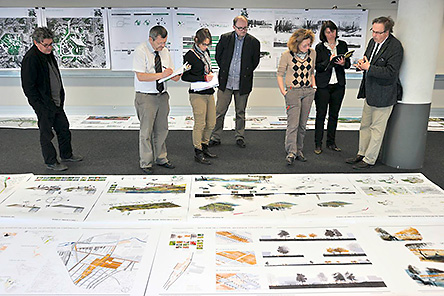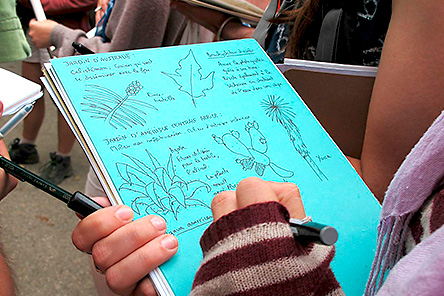School of nature and landscape architecture
Students learn how to tackle projects through modules looking at all the technical, scientific and visual aspects involved. Throughout the five-year course this approach is built on by setting increasingly complex challenges for students covering the analytical and preparatory stages of a landscape project, as well as those concerning the students' personal and increasingly independent development.

© INSA CVL
There are five core groups of modules making up the course syllabus over its 5 years
The course is organised around theoretical and practical knowledge concerning the multifaceted question of landscapes and the skills specific to the landscape architect’s profession of assessing, programming and designing.
The landscape project forms the beginning and end of the course. As an inhabited, represented, cultivated and developed territory, the landscape is always moving, evolving and the focus of projects. Landscape is a project.
Landscape projects develop students’ intuition and spark their creativity. They involve acquiring the method for analysis and diagnosis, right through to defining the challenges and objectives that lead to individual or group projects.
They are often based on a real area of consideration or site. Students sketch out and develop a solution that they will design and implement themselves.

Project presentation
© INSA CVL
The scientific and technical modules concern the necessary disciplines for being familiar with the living world, and for studying, understanding and analysing territories and landscapes, such as biology, ecology, botany, pedology and geology.
The engineering sciences modules on landscape projects encompass the prerequisites for implementing a landscape project, with a view to using them above all to inspire and further a project’s design, rather than within the limited scope of prescriptive applications. These modules comprise a range of aspects to do with roads and related infrastructure, hydrology, use of plants or the sound and light atmosphere of a landscape project.
Modules in human and social sciences raddress a number of subjects including the culture and history of landscapes, the history of cities and urban representation, urban and rural geography, urban planning and landscape law, spatial planning and territorial policies, as well as the English language.
The aim is to train landscape architects who are tuned into the social and professional environment they will work in and to help them to develop skills enabling them to take a stand and to undertake projects.
Modules in the visual arts and representation are taught throughout the five-year course. Visual composition, framing, setting the scene and layout are constant concerns.
The point here is to consider that there is an analytical procedure involved in every production of images or representations, which is, in some ways, a project in its own right.
Overall, 11 months of the five-year course are spent on placement.
In years one and two, the initial work-experience (“ouvrier”) placements are carried out in botanical gardens or nursery for 8 weeks. Their purpose is to familiarise students with the world of plants, their production and care.
The placements in years three and four, which last an equivalent length of time, must be carried out on the subjects of project contracting and project management.
State landscape architect degree
Successful graduates will be awarded the State landscape architect degree from the Centre-Val de Loire, which is the equivalent to a Master.

© INSA CVL
Professional practice
Although the professional practices of landscape architects are becoming more diversified, two main lines of work can be distinguished:
- Project management, when landscape architects primarily carry out design tasks within landscaping firms or multidisciplinary teams made up of architects, urban planners and landscape architects for example
- Project contracting, when they can join the State or territorial civil service, recruited mainly by local authorities to design, planning or spatial planning positions, with line management responsibilities.

© INSA CVL
Find out more…
Online
- Report on the French TV channel France 3 in the “Paysages” (Landscapes) series:
https://www.youtube.com/watch?v=ZmARLjJRL_k&feature=share

